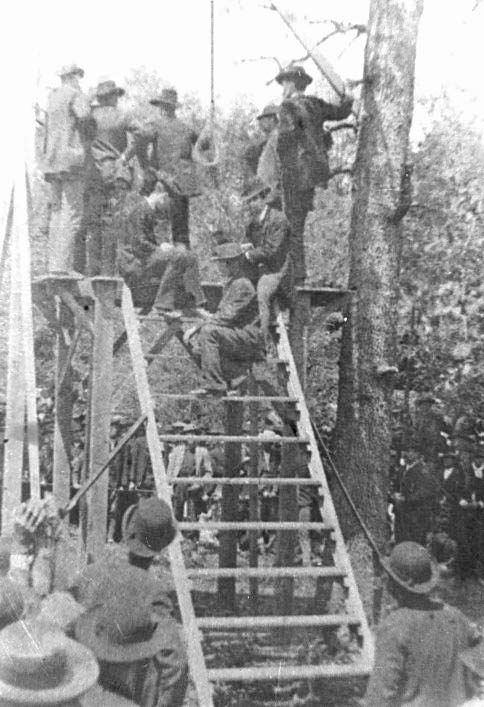
‘Let Me Up There,
I’ll Hang Him For You’
From the White County Historical Society

The following is in response to a question from Historical Society member Mary Reynolds of North Little Rock, who wrote: "When I was young my grandmother told about going to a hanging when she was a little girl. Of course then I thought I would remember and did not write it down, how I wish that I had. She was Ida Belle Doss Price born in 1881. She lived at Lebanon. She said an aunt took her to see this; I think she said the man had murdered his wife. The aunt was very eager to see him hanged, she kept shouting to let her up there she would pull the rope. Have you read anything about a hanging in this time and location? I can't imagine taking a child to something like this. But times were different."
Arkansas Gazette, May 1, 1886
SEARCY, Arkansas – The law was vindicated today in the execution of George W. Carroll, who threw his wife into a well and drowned her Feb. 20, 1885, by keeping her under the water with a stick. He made a full confession on the scaffold, saying that he was influenced by Viney Tidwell to do the deed but that he now had forgiveness. He made a written confession to Rev. E.A. Garrison Tuesday morning, though it was not given to the press until today.
There has never been a more fiendish crime in the state than the murder of his wife by George Carroll. In February he lived on a small farm in the northern part of White County [near Clay]. He had shifted about from different localities and was of the poorer class of farmers. The family was shiftless, and lived in a slipshod manner. His family consisted of Lizzie, his wife, two children and his half-brother’s widow, Viney Tidwell. She it was for whom the murder was committed. She and Carroll were fond of each other. She assisted in the farm work while Mrs. Carroll performed the housework. She also accompanied Carroll to dances while Mrs. Carroll generally remained at home. The intimacy between the two no doubt became illicit and was the cause of the horrible death of the wife.
About sunrise on the morning of February 2, 1885, the body of Mrs. Carroll was found in the well near the house. It had a low rail fence around it, no windless, the water being drawn up with a bucket by hand. The water reached within three feet of the surface. The discovery was made by Viney Tidwell, who raised an outcry that soon brought the neighbors. At the time of the discovery of the body Carroll was at work several hundred yards from the well. The body bore evidence of a deadly struggle. The clothing was torn and the top of the head badly bruised.
The circumstances were so suspicious that Carroll and Viney Tidwell were arrested and charged with the murder. The case came up for trial last July. Carroll was first placed on trial. Before closing the case for the state the prosecuting attorney dismissed the case against Viney Tidwell and placed her on the stand when she turned state’s evidence and Carroll was convicted.
She testified that Carroll made a plan a week before the murder to get rid of his wife. He was building a chimney, and told Viney he intended to induce his wife to go up on the ladder, when he would push her off and drop a heavy stone on her, making it appear the fall was accidental. This plan was frustrated by a neighbor coming in and helping to build the chimney. Carroll then told Viney Sunday evening, February 1, that he intended to put his wife in the well the next morning. The family rose early and breakfast by candlelight. When breakfast was over Carroll went out of the house, and after a little called to his wife to draw up some water. She went out, and Viney threw herself on the bed and covered her ears to keep from hearing the cries. Carroll came in after a while and told her the job was finished. He started to his work and told Viney not to alarm the neighbors until he had gotten away from the house and begun rail-splitting. She obeyed, and then the events transpired as heretofore related. It was a fiendish crime, and in spite of great efforts to have the sentence commuted the murderer got his just deserts. He was sentenced to hang last September but an appeal was taken to the Supreme Court and a respite granted until October 16. The case was not finally disposed of until five weeks ago, when the governor refused commutation.
[The hanging took place on Gin Creek, near what is now Berryhill Park on the east side of Searcy.]